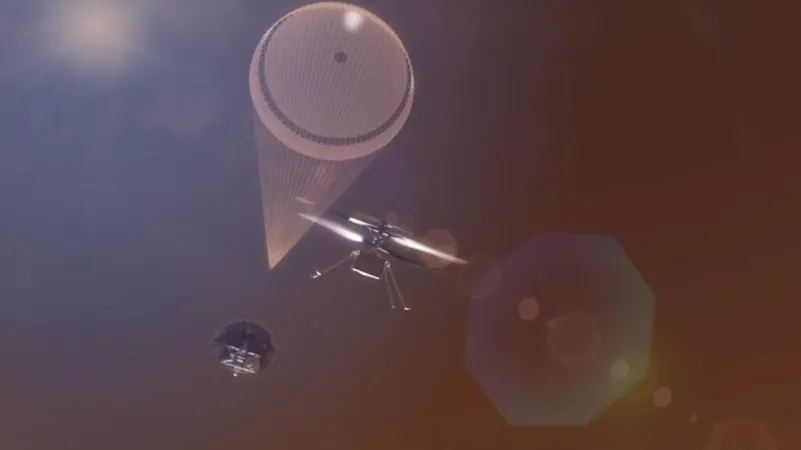
Get Ready for Mars: NASA Plans a Squad of Helicopters to Scout Landing Sites!
2025-07-29
Author: Arjun
NASA's Ambitious New Mission: Skyfall
In 2021, NASA achieved a historic milestone with the Ingenuity helicopter, marking the first powered flight on another planet. Now, the agency is poised to revolutionize Martian exploration once again. The new mission, dubbed "Skyfall," aims to deploy six cutting-edge helicopter drones during their descent from Mars orbit—why waste time on the ground when you can take flight directly from the sky?
How Skyfall Works
Skyfall involves a capsule that will plunge towards the Martian surface, opening up just before impact to release the six nimble helicopters. Each drone will chart its own course, armed with advanced cameras and radar technologies to scan beneath the surface for vital resources like water and ice. This critical data will help identify potential landing sites for humanity's next giant leap on the red planet.
Could We Find Signs of Life?
This innovative drone operation could even bolster humanity’s quest to understand whether Mars was ever capable of sustaining life. While it might be a stretch to think a robot helicopter could find extraterrestrial life, we can dream, right?
The Legacy of Ingenuity
Since its launch, Ingenuity has exceeded all expectations, covering an astonishing 10.5 miles over three years compared to its initial goal of just 980 feet. Though it faced a crash landing in January 2024, which left it permanently grounded, Ingenuity continues to contribute by acting as a reliable weather station.
A New Era of Martian Exploration
NASA clearly views the Skyfall mission as a monumental extension of Ingenuity. These new drones will be enhanced versions of their predecessor, built in collaboration with AeroVironment, Inc. However, the balance between public and private sectors is evolving, as AeroVironment takes on more responsibilities previously held by NASA, reflecting a shift towards privatization in space exploration.
When Will Skyfall Take Off?
Skyfall isn’t set to launch until at least 2028, but if all goes according to plan, the skies over Mars could soon be buzzing with drone activity. This could lead to a new era of interplanetary exploration and, who knows, maybe even a few surprises waiting for us on Mars!



 Brasil (PT)
Brasil (PT)
 Canada (EN)
Canada (EN)
 Chile (ES)
Chile (ES)
 Česko (CS)
Česko (CS)
 대한민국 (KO)
대한민국 (KO)
 España (ES)
España (ES)
 France (FR)
France (FR)
 Hong Kong (EN)
Hong Kong (EN)
 Italia (IT)
Italia (IT)
 日本 (JA)
日本 (JA)
 Magyarország (HU)
Magyarország (HU)
 Norge (NO)
Norge (NO)
 Polska (PL)
Polska (PL)
 Schweiz (DE)
Schweiz (DE)
 Singapore (EN)
Singapore (EN)
 Sverige (SV)
Sverige (SV)
 Suomi (FI)
Suomi (FI)
 Türkiye (TR)
Türkiye (TR)
 الإمارات العربية المتحدة (AR)
الإمارات العربية المتحدة (AR)